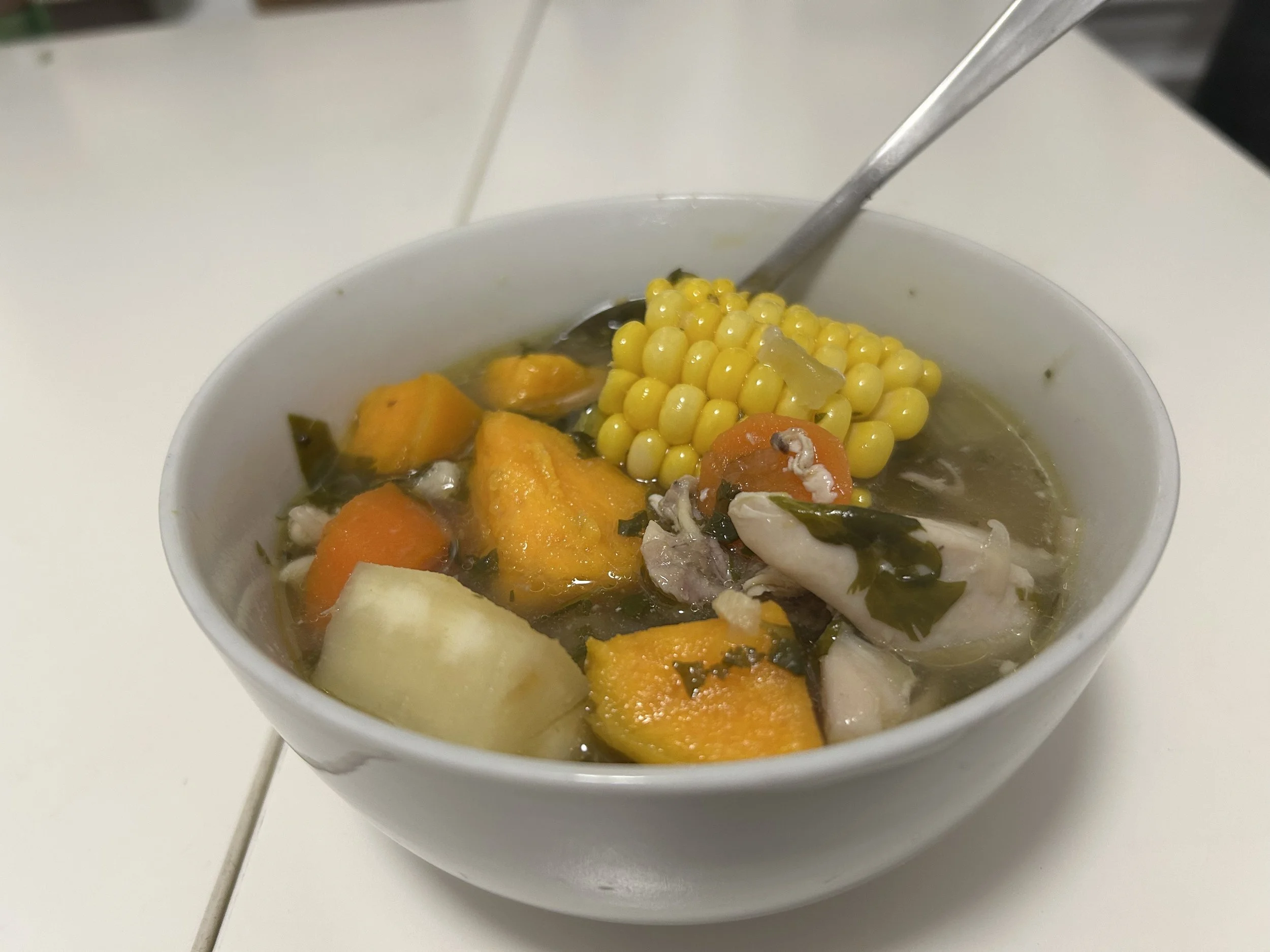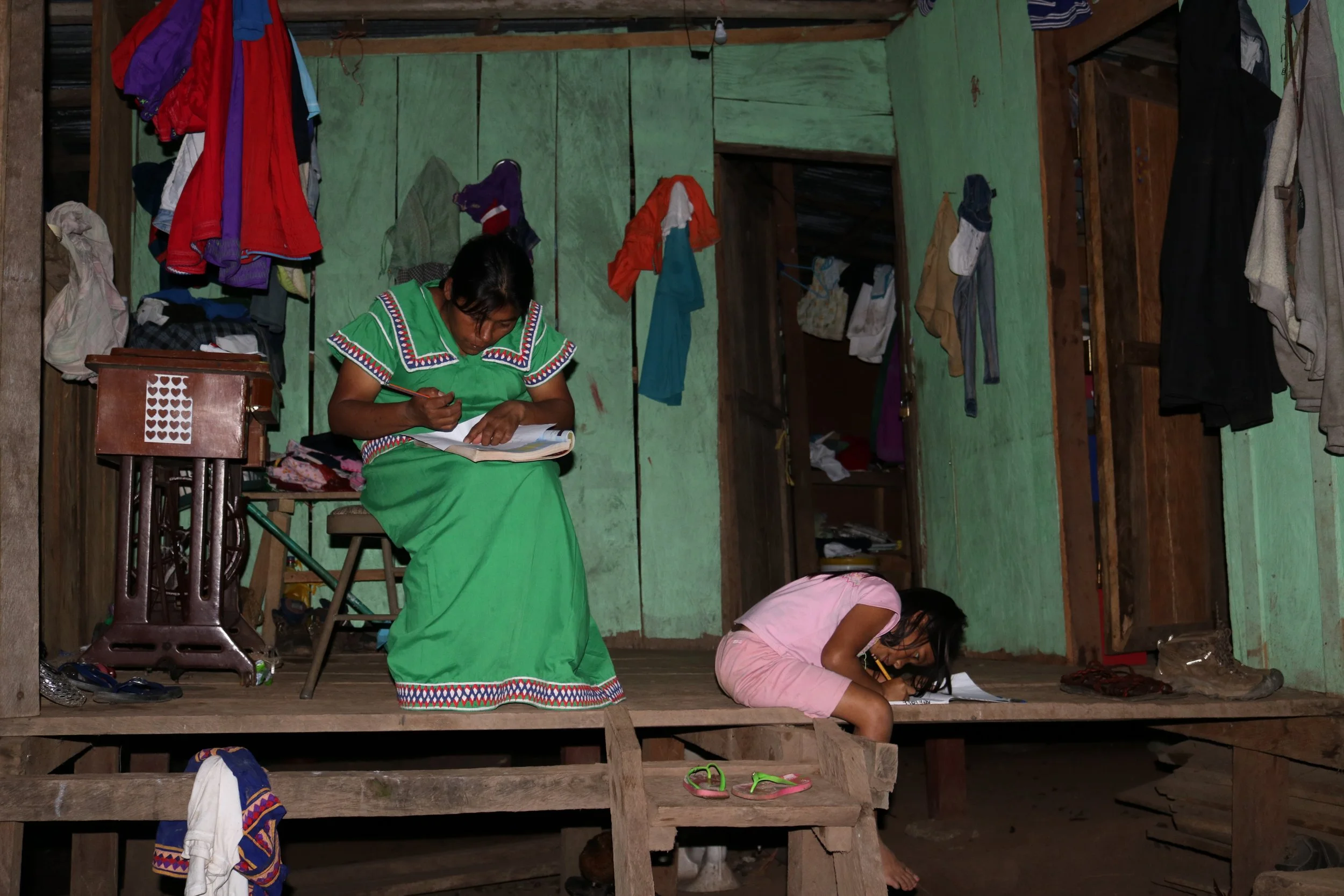This guest post by Few for Change Communications Fellow Morgan Oestereich introduces the seven indigenous groups with communities in Panama. This post will discuss the four groups with communities on the western side of the country. A second post will discuss the three remaining groups with territories on the eastern side of the country, and various active indigenous organizations and their initiatives in Panama.
Few for Change operates within the Comarca Ngäbe-Buglé, a region in Panama with the country’s largest indigenous population. Two distinct indigenous groups reside here: the Ngäbe and the Buglé. However, Panama’s indigenous population does not consist solely of people who identify as Ngäbe or Buglé. In fact, Panama has seven indigenous peoples, the Ngäbe, Buglé, Guna, Emberá, Wounaan, Bribri, and Naso Tjër Di that constitute 12% of its total population[1]. These groups live within the country’s five Comarcas, various communities or territories, and throughout the rest of the country.
Comarca is a word used to describe a region in Panama that, while seeming to appear on the map as simply another province, is actually semi-autonomously governed by the indigenous people(s) living there. Panama’s five Comarcas were created between 1953 and 2000, three of which are controlled by the Guna (Comarcas Guna Yala, Guna Madugandí, and Wargandi), one shared by the Ngäbe and the Buglé (Comarca Ngäbe-Buglé), and one shared by the Emberá and the Wounaan (Comarca Emberá-Wounaan)[2,3].
Below you will find a brief description of four out of Panama’s seven indigenous groups, living within the western half of the country. The remaining three—those in eastern Panama—will be described in a subsequent post. These descriptions include their history, culture, and current issues they face.
A map of Panama’s indigenous Comarcas and territories. Note: Kuna is an outdated spelling of Guna[A].
Ngäbe
The Ngäbe are Panama’s largest indigenous group, with approximately a quarter of a million people speaking their native Ngäbere. The majority of the Ngäbe live within the Comarca Ngäbe-Buglé, where families and communities mainly practice subsistence agriculture or work as agricultural laborers.
Few for Change students Edita and Gloria wearing traditional and modern styles of the nagua dress, and carrying handmade bags called chácaras, in the Comarca Ngäbe-Buglé[B].
While originally occupying a portion of the land stretching from the Pacific to the Caribbean, Spanish colonization and cattle ranching forced the Ngäbe into the mountainous central regions of the country where their Comarca is currently located. In the latter half of the 20th Century, Ngäbe land became threatened by mining, banana plantations, and the construction of the Panamerican Highway. Almost three decades of protests gave way to the creation of the Comarca Ngäbe-Buglé in 1997[4].
Ngäbe culture thrives through a variety of ceremonies. One such ceremony is La balseria. Often held after bountiful harvests, the ceremony highlights a variety of Ngäbe dances and artisanal practices. La balseria itself is a game played between men, wherein two players throw a four-foot balsa stick at the legs of their opponent in turns, until one player admits defeat. Thousands of Ngäbe make the long, arduous journey from their distant communities to converge at la balseria ceremony and set up temporary camps to enjoy multiple days of festivities[5].
Currently, the Ngäbe land and culture is threatened by the construction of hydroelectric dams that can flood entire communities, forcing the Ngäbe to once again move from their land. Additionally, the Comarca has very few roads, making education difficult for school-aged children past primary school; though many communities have access to elementary education, high schools are less frequent in the Comarca. Lack of transportation infrastructure also creates difficulties in accessing healthcare, jobs, and goods and services. Many Ngäbe move out of the Comarca to Panama City or other urban areas in Panama to work and study, due to few job prospects within the Comarca and generational poverty[4].
Buglé
The Buglé share the Comarca Ngäbe-Buglé with the Ngäbe, however, they are a distinct group with a distinct language called Buglére[6]. There are an estimated 18,000 speakers of Buglére. Culturally, the Buglé are very similar to the Ngäbe, and for this reason, along with their much smaller population, they share a Comarca and face similar obstacles.
The Buglé are known for their artisanal bag-crafting skills. These bags, known as chácaras, are made of dyed vegetable fibers, and can be crafted for a variety of purposes—from coin pouches to baby carriers[7].
Bribri school children in their uniforms [C].
Bribri
While the majority of the Bribri people live in Costa Rica (approx. 12,000 people), about 300 live within nine settlements in the province of Bocas del Toro, along the Costa Rican border[8].
The Bribri have lived in the Talamanca mountain range region of Costa Rica and Panama since pre-Hispanic times, and were generally able to withstand Spanish conquistadors and remain isolated well into the 20th Century. Therefore, Bribri culture and language has remained strong, and many communities survive off subsistence agriculture[9].
Bribri society is organized in matrilineal clans of extended families. In Bribri culture, the cacao tree is a sacred reincarnation of a woman who their god, Sibú, transformed. Thus, preparation of cacao is a sacred process only allowed to be performed by women for certain ceremonies. Bribri culture is preserved through oral history passed from awa (meaning Shaman) to awa[10].
While the Bribri’s isolation has ensured the survival of their culture, it has also made accessing healthcare and education difficult for those seeking it. Many living along the border have both Costa Rican and Panamanian identification to aid in accessing these services. The delicate balance of cultural preservation and isolation has been the cause for internal conflict within the Bribri. While increased education helps to tackle high illiteracy rates, many fear a subsequent loss of culture[11].
Naso Tjër Di
Approximately 3,500 Naso live in northwest Panama, within the Naso Territory, where they have lived for over 500 years. Existing along the Teribe River (Tjër Di in the Naso language, meaning “Grandmother Water”), the Naso is the last remaining indigenous group in the Americas to have a functioning monarchy. The majority of the Naso survive off subsistence agriculture due to their isolation, although some agricultural goods are exported to the nearby city of Changuinola.
Naso representatives at the National Assembly [D].
During the 1500s, Spanish conquistadors attempted to invade Naso territory in order to acquire gold. However, they found the Naso people too hostile to confront. Throughout Panama’s Spanish colonial period, the Spaniards were generally unsuccessful in their efforts to conquer them. The Naso also frequently faced conflict with the Brirbi, as recently as the early 21st century[12].
Currently, encroaching cattle ranchers, the construction of hydroelectric dams, corruption within the monarchy, and the endangerment of the Naso language threaten the Naso. They have been petitioning the Panamanian government for over 40 years, but have yet to receive their own Comarca, which would grant them autonomous authority over their land[13].
For more information about the Naso and some great photos, be sure to read Two Days in El Territorio Naso Tjër Di. This blog post illustrates what FFC Communications Fellow Morgan Oestereich learned during her stay with a Naso family, through her semester studying abroad with SIT Panama.
The next blog post will focus on eastern Panama’s indigenous groups: the Guna, Emberá, and Wounaan. It will also explore ways in which readers can learn more about indigenous land and communities near them, and how they can support indigenous Panamanians in other ways.
Stay tuned for the upcoming post!
Sources:
[1] https://www.iwgia.org/en/panama.html
[2] http://territorioindigenaygobernanza.com/web/pan_06/
[3] https://www.villagerights.com/Panama-The-Comarca-And-The-Kuna
[4] https://minorityrights.org/minorities/guaymi-ngobe-bugle/
[5] https://noleduima.municipios.gob.pa/cultura.php?page=279&idm=52
[6] https://en.wikipedia.org/wiki/Buglere#cite_note-e18-1
[7] https://www.ecured.cu/Los_Buglé
[8]https://web.archive.org/web/20131219031439/http://www.panamaamerica.com.pa/notas/1158767-bri--bri,-una-nueva-comarca-que-podria-morir-en-su-cuna
[9] https://www.everyculture.com/Middle-America-Caribbean/Boruca-Bribri-and-Cab-car-History-and-Cultural-Relations.html
[10] https://www.planetoneworld.org/our-world/bribri-culture
[11] https://www.theatlantic.com/education/archive/2015/12/costa-ricas-indigenous-students/421335/
[12] https://en.wikipedia.org/wiki/Naso_people
[13] https://www.laestrella.com.pa/cafe-estrella/planeta/181102/naso-reino-pequeno-resiste-indigena
Images:
[A] https://www.joebrownadventures.com/wp-content/uploads/2018/09/Mapa-Grupo-Indigena.png
[B] Photo credit: Few for Change volunteers
[C] https://outwardboundcostarica.org/wp-content/uploads/2015/04/bb1.png
[D] https://www.panamatoday.com/sites/default/files/2018-10/asamblea.jpg


![A map of Panama’s indigenous Comarcas and territories. Note: Kuna is an outdated spelling of Guna[A].](https://images.squarespace-cdn.com/content/v1/534af399e4b09ac511772deb/1599133160433-C1AP020DW7HVK1UK0IZR/Mapa-Grupo-Indigena.png)
![Few for Change students Edita and Gloria wearing traditional and modern styles of the nagua dress, and carrying handmade bags called chácaras, in the Comarca Ngäbe-Buglé[B].](https://images.squarespace-cdn.com/content/v1/534af399e4b09ac511772deb/1599132787300-OK4E5NPP75FUUL9CAHPY/IMG_20200216_134410.jpg)
![Bribri school children in their uniforms [C].](https://images.squarespace-cdn.com/content/v1/534af399e4b09ac511772deb/1595801347636-DEB7LFALBNLFU14CGLVM/bribri.png)
![Naso representatives at the National Assembly [D].](https://images.squarespace-cdn.com/content/v1/534af399e4b09ac511772deb/1595801510503-BEQ4SXAP76IQI26JVTUV/naso+tjerdi.jpg)











